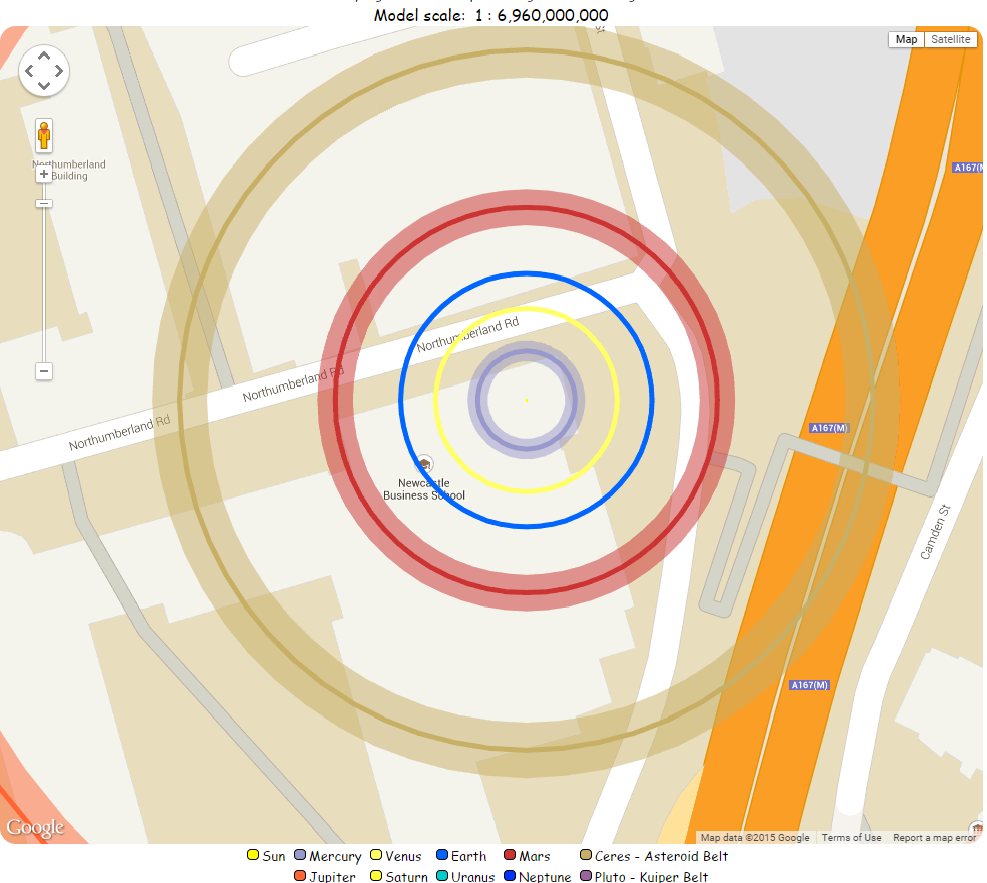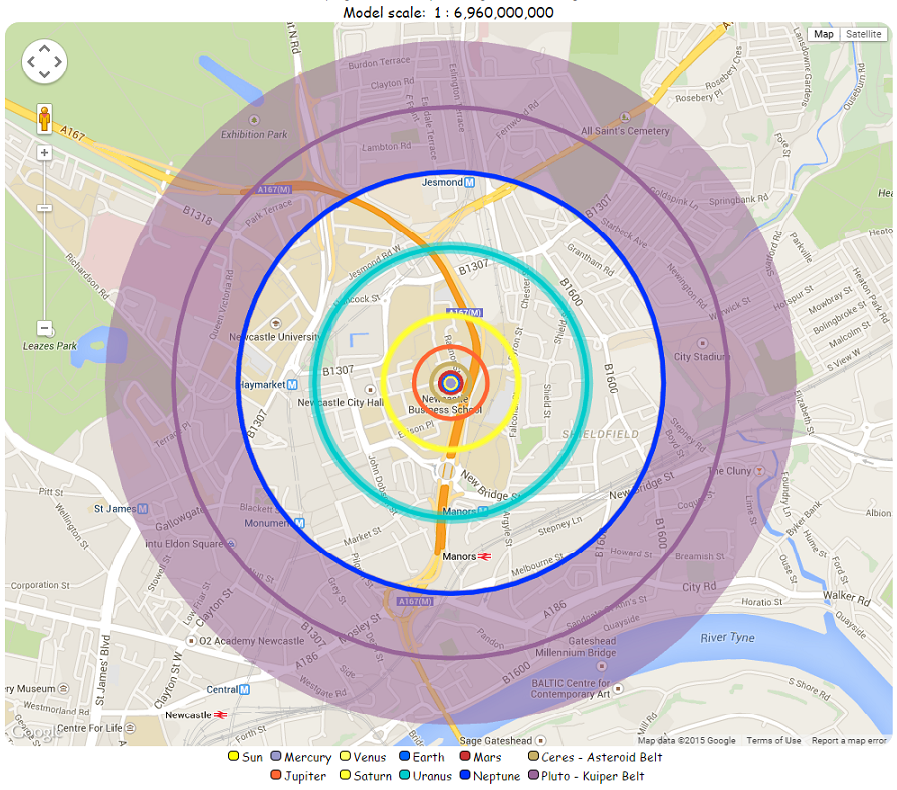Nothing Found
Sorry, no posts matched your criteria
Sorry, no posts matched your criteria
Find out more about biochemist and astronaut Peggy here.
Our introduction to exploration and discovery, for parents and their children.
Notes, slides, and additional links for Think Physics’ sessions at the ASE Annual Conference, 2016.
We recently had a request from a local school for a workshop that linked maths and space. A natural fit, of course, and an example of the sort of workshop we can pull together to fit in with your teaching needs.
As a starter, we looked at the first half of the classic ‘Powers of Ten’ film:
It’s a great film to use to show the massive range of scales over which physics is useful, from galaxies to people to quarks. However, for this session, I wanted to focus just on the journey out to the edge of the observable universe.
After than we turned out attention to our nearest (natural) neighbour – the Moon. Although the diagrams of the solar system often show the Moon as being very close to Earth, you can visualise the distance easily because the Moon is about 10x the diameter of the Earth away from us. Using any ball to represent the Earth, wrap a piece of string around the middle of the ball ten times. Unwrap, and there you have a nice visual representation of how far away the Moon is.
When I was teaching in a school, one of my regular activities was to make a scale model of the solar system. The problem with the solar system is that space is BIG. It’s really hard to create a solar system model which has the same scale for both the diameter of the planets and the distances between the planets. The activity I used for Think Physics is one which is adapted from ‘The Earth as a peppercorn,’ and there are variations on the theme all over the internet.
How big are the planets in relation to each other?
There are online calculators which will allow you to do the scaling without effort, but as we were doing a maths workshop, we got out our scientific calculators and did the maths ourselves. We used a football (diameter 20cm) as the Sun, and used scaling to work out the diameter of the planets. If you don’t want to do your own calculations then I like the Thinkzone version of the solar system calculator. In the picture you can see the options that I offered as possible objects that would be the right size for our model.
Having worked out that hundreds and thousands are about the right size for mercury, silver dragées work for Earth, and cherry tomatoes would be good for Jupiter, we then tried to put the objects in the correct place – using the same scale.
We used a toilet roll to help with the distances (similar to this NRICH activity) – and the students quickly realised that there just wasn’t enough space in our lab. In fact, using our scale (the Sun as a football), the only planet we could fit into Think Lab was Mercury. The maps show where we would have to put our objects.

The orbits of the inner planets, if the sun is 20cm in diameter.

The orbits of the planets (and Pluto) according to our scale model.
If you want to do this activity – you could use the Thinkzone calculator and center the solar system on your own school – you just need your latitude and longitude, which you can find by placing a marker on Google Maps. Students can then work out where their house is on the map, or you could even go on a solar system safari and walk the distances involved using a trundle wheel and your map.
Explore the moon from your back yard with our handy downloadable observation diary.
We may request cookies to be set on your device. We use cookies to let us know when you visit our websites, how you interact with us, to enrich your user experience, and to customize your relationship with our website.
Click on the different category headings to find out more. You can also change some of your preferences. Note that blocking some types of cookies may impact your experience on our websites and the services we are able to offer.
These cookies are strictly necessary to provide you with services available through our website and to use some of its features.
Because these cookies are strictly necessary to deliver the website, refusing them will have impact how our site functions. You always can block or delete cookies by changing your browser settings and force blocking all cookies on this website. But this will always prompt you to accept/refuse cookies when revisiting our site.
We fully respect if you want to refuse cookies but to avoid asking you again and again kindly allow us to store a cookie for that. You are free to opt out any time or opt in for other cookies to get a better experience. If you refuse cookies we will remove all set cookies in our domain.
We provide you with a list of stored cookies on your computer in our domain so you can check what we stored. Due to security reasons we are not able to show or modify cookies from other domains. You can check these in your browser security settings.
These cookies collect information that is used either in aggregate form to help us understand how our website is being used or how effective our marketing campaigns are, or to help us customize our website and application for you in order to enhance your experience.
If you do not want that we track your visit to our site you can disable tracking in your browser here:
We also use different external services like Google Webfonts, Google Maps, and external Video providers. Since these providers may collect personal data like your IP address we allow you to block them here. Please be aware that this might heavily reduce the functionality and appearance of our site. Changes will take effect once you reload the page.
Google Webfont Settings:
Google Map Settings:
Google reCaptcha Settings:
Vimeo and Youtube video embeds:
The following cookies are also needed - You can choose if you want to allow them:
You can read about our cookies and privacy settings in detail on our Privacy Policy Page.
Privacy Notice and Cookies 2025